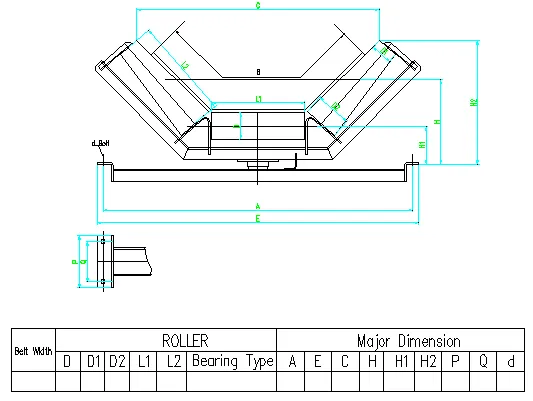 Afrikaans
Afrikaans  Albanian
Albanian  Amharic
Amharic  Arabic
Arabic  Armenian
Armenian  Azerbaijani
Azerbaijani  Basque
Basque  Belarusian
Belarusian  Bengali
Bengali  Bosnian
Bosnian  Bulgarian
Bulgarian  Catalan
Catalan  Cebuano
Cebuano  Corsican
Corsican  Croatian
Croatian  Czech
Czech  Danish
Danish  Dutch
Dutch  English
English  Esperanto
Esperanto  Estonian
Estonian  Finnish
Finnish  French
French  Frisian
Frisian  Galician
Galician  Georgian
Georgian  German
German  Greek
Greek  Gujarati
Gujarati  Haitian Creole
Haitian Creole  hausa
hausa  hawaiian
hawaiian  Hebrew
Hebrew  Hindi
Hindi  Miao
Miao  Hungarian
Hungarian  Icelandic
Icelandic  igbo
igbo  Indonesian
Indonesian  irish
irish  Italian
Italian  Japanese
Japanese  Javanese
Javanese  Kannada
Kannada  kazakh
kazakh  Khmer
Khmer  Rwandese
Rwandese  Korean
Korean  Kurdish
Kurdish  Kyrgyz
Kyrgyz  Lao
Lao  Latin
Latin  Latvian
Latvian  Lithuanian
Lithuanian  Luxembourgish
Luxembourgish  Macedonian
Macedonian  Malgashi
Malgashi  Malay
Malay  Malayalam
Malayalam  Maltese
Maltese  Maori
Maori  Marathi
Marathi  Mongolian
Mongolian  Myanmar
Myanmar  Nepali
Nepali  Norwegian
Norwegian  Norwegian
Norwegian  Occitan
Occitan  Pashto
Pashto  Persian
Persian  Polish
Polish  Portuguese
Portuguese  Punjabi
Punjabi  Romanian
Romanian  Russian
Russian  Samoan
Samoan  Scottish Gaelic
Scottish Gaelic  Serbian
Serbian  Sesotho
Sesotho  Shona
Shona  Sindhi
Sindhi  Sinhala
Sinhala  Slovak
Slovak  Slovenian
Slovenian  Somali
Somali  Spanish
Spanish  Sundanese
Sundanese  Swahili
Swahili  Swedish
Swedish  Tagalog
Tagalog  Tajik
Tajik  Tamil
Tamil  Tatar
Tatar  Telugu
Telugu  Thai
Thai  Turkish
Turkish  Turkmen
Turkmen  Ukrainian
Ukrainian  Urdu
Urdu  Uighur
Uighur  Uzbek
Uzbek  Vietnamese
Vietnamese  Welsh
Welsh  Bantu
Bantu  Yiddish
Yiddish  Yoruba
Yoruba  Zulu
Zulu main parts of belt conveyor
Main Parts of a Belt Conveyor
Belt conveyors are among the most commonly used types of material handling systems in many industries, ranging from manufacturing to logistics. They play a crucial role in transporting materials efficiently over varying distances and terrains. Understanding the main parts of a belt conveyor is essential for both operators and engineers to ensure optimal functionality and maintenance.
1. Belt
The belt is the most critical component of the conveyor system. Typically made from materials such as rubber, fabric, or metal, the belt is designed to carry the load across the conveyor's length. The choice of the belt material depends on the type of materials being transported, the environment in which the conveyor operates, and the required durability. A well-constructed belt will minimize wear and tear, reducing maintenance costs and downtime.
2. Pulley System
The pulley system includes the drive pulley, tail pulley, and sometimes, additional return pulleys. The drive pulley, powered by a motor, rotates to move the belt forward, while the tail pulley directs the return of the belt back to its initial position. These pulleys are usually constructed from materials that provide high friction to maintain grip on the surfaces of the belt. The alignment and tension of the pulleys are critical for the conveyor’s performance and prolonging the life of the belt.
3. Idlers
Idlers are the supports placed along the length of the conveyor to guide and support the belt. They are crucial in reducing friction and ensuring the belt travels smoothly. Various types of idlers are used depending on the application, including troughing idlers, return idlers, and impact idlers. Troughing idlers, which are often used in the loading area, are designed to allow the belt to carry more material by forming a V shape. Proper installation and maintenance of idlers prevent belt sagging, which can lead to material spillage and increased wear.
main parts of belt conveyor

4. Frame
The frame is the structural component that supports the entire conveyor system. Made typically from steel or aluminum, the frame must be robust enough to bear the weight of the materials on the belt while maintaining its integrity under operational stress. The frame also determines the conveyor's length, width, and height, which are critical dimensions depending on the specific application and installation space.
5. Motor and Drive Mechanism
A motor drives the conveyor system, often paired with a gearbox to control the speed of the operation. Electric motors are the most common type, providing a consistent and adjustable speed. The drive mechanism translates the motor’s output into motion, allowing for smooth and efficient transport of materials. Choosing the right motor and drive configuration is essential for achieving the required speed and torque for various applications.
6. Take-Up System
The take-up system is responsible for maintaining proper tension on the belt. It compensates for wear and elongation of the belt over time, ensuring the conveyor operates efficiently. This system can be either manual or automatic, depending on the design of the conveyor. A well-functioning take-up system helps prevent slippage and extends the life of the belt, making it a vital component of the conveyor system.
Conclusion
In summary, a belt conveyor comprises several crucial parts, including the belt, pulley system, idlers, frame, motor and drive mechanism, and take-up system. Understanding these components is essential for anyone involved in the operation, maintenance, or design of conveyor systems. Proper maintenance and attention to these parts can lead to enhanced efficiency, reduced operational costs, and increased lifespan of the conveyor system, benefiting numerous industries that rely on material handling solutions.
-
Revolutionizing Conveyor Reliability with Advanced Rubber Lagging PulleysNewsJul.22,2025
-
Powering Precision and Durability with Expert Manufacturers of Conveyor ComponentsNewsJul.22,2025
-
Optimizing Conveyor Systems with Advanced Conveyor AccessoriesNewsJul.22,2025
-
Maximize Conveyor Efficiency with Quality Conveyor Idler PulleysNewsJul.22,2025
-
Future-Proof Your Conveyor System with High-Performance Polyurethane RollerNewsJul.22,2025
-
Driving Efficiency Forward with Quality Idlers and RollersNewsJul.22,2025





























